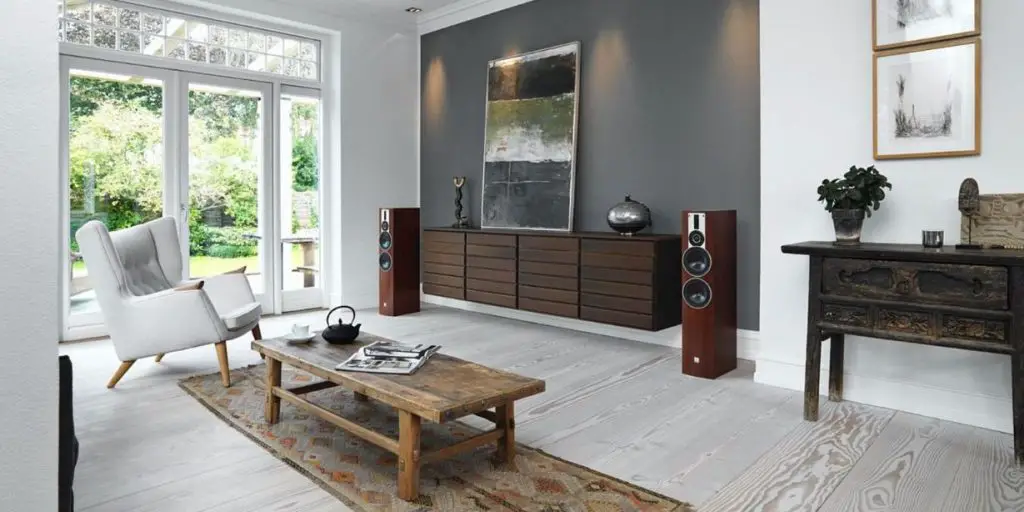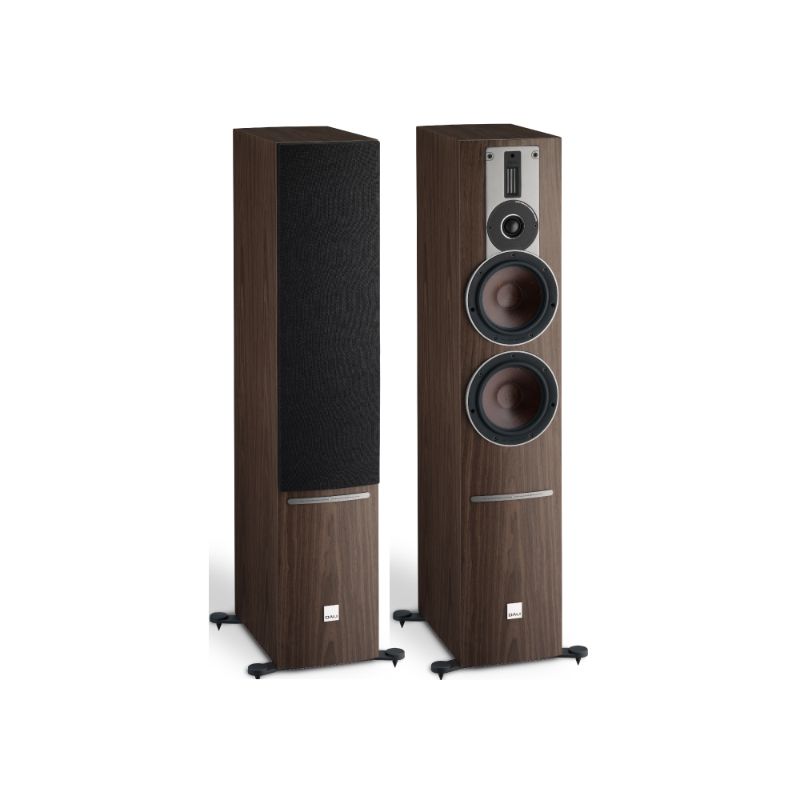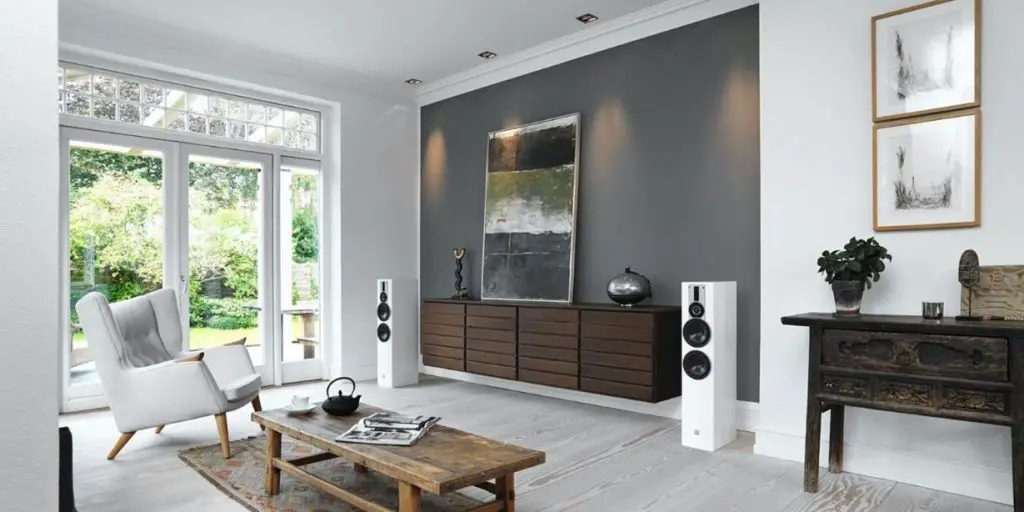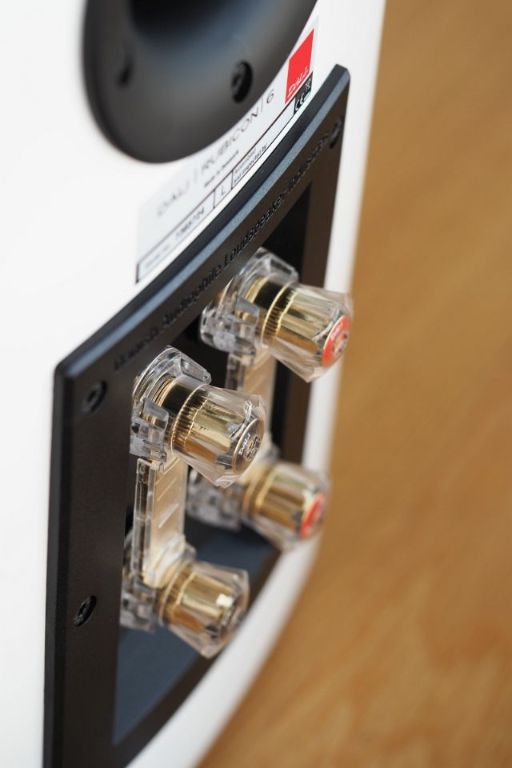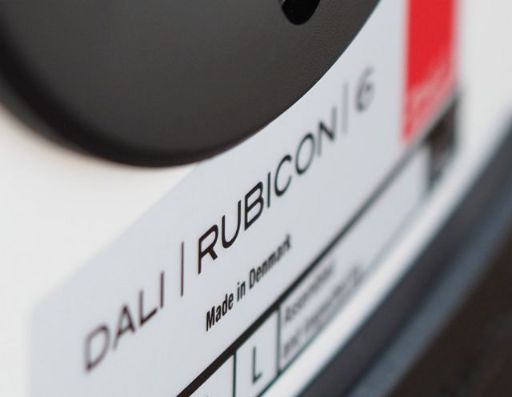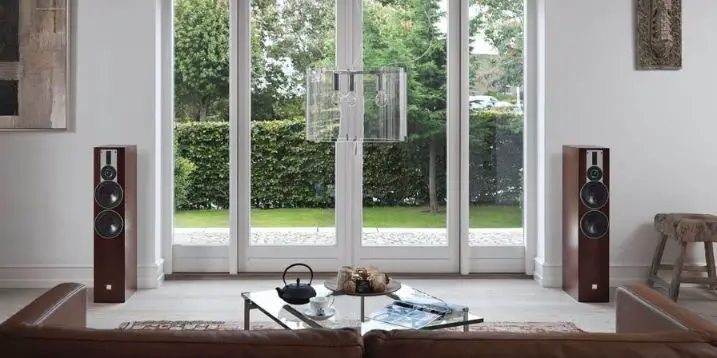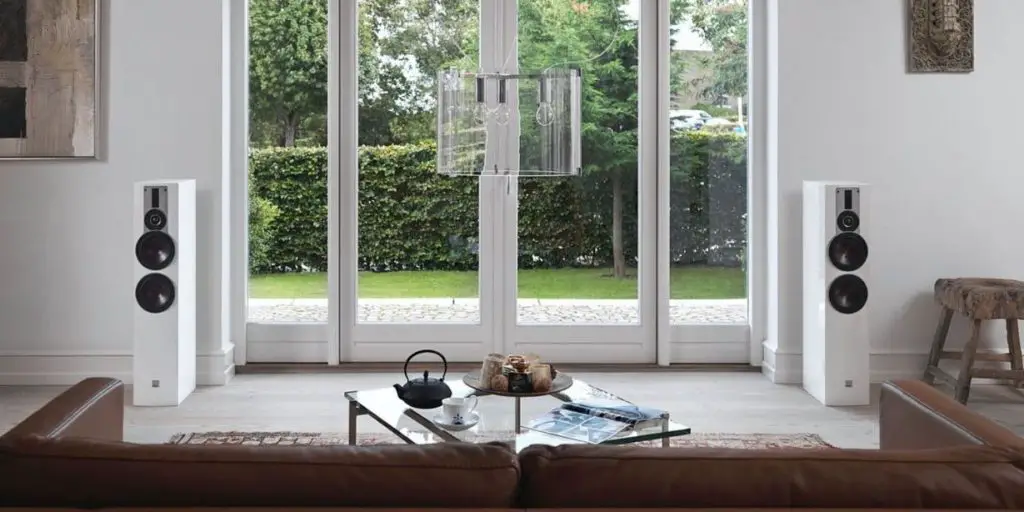Dali Rubicon 6 Review
The Danish Dali speaker company has a complete product line, from the flagship Megaline to the Hi-End series Epicon. The best-selling high-end model Helicon MK2 establishes Dali’sDali’s position in the Hi-End speaker market. The Zensor and Lektor series took over the entry series, but there seems to be a big gap between Lektor and Helicon MK2. Now the newly launched Rubicon series fills up the vacancy of the mid-range products, becoming the backbone of the leader. And I will review the Dali Rubicon 6 in this post (Click here for the review of Dali Rubicon 5).
The Rubicon series launched a total of five speakers. Rubicon 2 is a bookshelf speaker. Rubicon LCR is a special speaker that is convenient for wall hanging and adjustable treble direction, and the other three are all floor speakers, Rubicon 5, Rubicon 6, and Rubicon 8. It’s easy to recognize from the numbers on the back of the product.
According to Dali’s naming of the products, the higher the number, the higher the higher-end model, so the Rubicon 6 I heard is just sandwiched in the middle. There is a larger Rubicon 8 on the top, the same is Three-tone road, there is a smaller Rubicon 5 down, but it has become a two-tone road, so Rubicon 6 is the most affordable three-tone floor speaker in this series.
The most important selling point of the Rubicon series is the use of Epicon’s flagship technology. These technologies include aluminium ribbon tweeter, silk soft-dome tweeter module and SMC monolithic technology, and other aspects are inheriting the tradition of Dali’sDali’s excellent quality.
Dali’s expectations for Rubicon can be seen from the series’ name. Rubicon was initially a river covered with red mud in Italy. The Roman emperor Caesar led an army to cross the river in 49 BC and said, “There is no turning back here.” When DALI first developed Rubicon, it was assumed that this is a work that users have never looked back after listening to it, that is, the best work.
If the Rubicon series is already the best, What about the higher-end Epicon or Megaline? Don’t get me wrong, Rubicon is compared with competitors and strives to become the best speaker at the same price. Rubicon is manufactured and assembled in Denmark. At the same time, a large number of designs and technology from the higher-level Epicon series are used. DALI believes that the price of the Rubicon series is only comparable to other brands of the same price level in terms of materials and workmanship.
The Design
In terms of appearance, the black version of the Rubicon 6 floor-standing speaker does have a high degree of perfection. The piano paint has an excellent texture, which adds a sense of nobility to the speakers. The Danish quality is not in vain. However, the appearance and workmanship are not enough. A good speaker should be provided for the best sound performance.
The Rubicon 6 speaker’s cabinet is not only solid, and the two 6.5-inch monomers (midrange and bass) and tweeter modules are in separate chambers. In addition, it can be found that the positions of the two large-diameter bass ports on the back are slightly different. The upper reflection port is directly behind the midrange unit, and the lower bass reflection port is not directly facing the back of the driver unit.
Still, it is located below the bottom of the speaker. Dali said that the position of the reflection hole and the aperture design had been optimized. In my opinion, because the woofer needs a larger cabinet volume to digest the back wave energy, the port’s position is lower.
Dali replaces the traditional copper wire with copper-clad aluminum wire (CCAW), which significantly reduces the weight of the voice coil winding and adds more strength. The aluminum ribbon tweeter is a powerful tool to increase the diffusion angle of the entire tweeter module. The ribbon tweeter is integrated with the silk soft dome tweeter so that the tweeter not only extends up to 30kHz, but more importantly, the sound diffusion angle ratio, compared with the pure silk soft hemisphere tweeter, is much more open. This open high-frequency extension is one of the characteristics of Dali speakers.
Although Rubicon is not a top series product, it is still used Dali’s own high-end driver unit. Dali Rubicon 6 speaker adopts 2 + 1/2+1/2 ways sound circuit design. Each channel uses four monomers, which is divided into high-frequency and low-frequency monomers.
Toe-in is necessary because the sweet spot is bound to be limited to a small area. There is no problem with narrowing the diffusivity by using the aluminium ribbon diaphragm. Therefore, if it is handed over to it above 14kHz, it can prevent the convex cone treble from narrowing the diffusivity, not to mention the overtone range of the musical instrument above this frequency band.
Because it overcomes the problem of limited diffusion, Dali recommends that Rubicon 6 tower speaker can be placed in position without toe-In, which can create an extensive sweet spot position. But after all, this is only a suggestion from Dali, and it is best for users to do the adjustment according to the specific space conditions.
In the state of toe-In with a large angle, the audio stage is indeed fuller and solid, but the sound is not so open and natural. There is a big difference in the sense of hearing between the two positions for the same pair of speakers. Any audiophiles should not ignore the importance of the position.
The Tweeter
The high-frequency unit refers to the tweeter module, composed of a 29mm (1.14 inch) aluminium alloy front baffle and a 17×45mm aluminium ribbon unit with a soft convex cone. The two units are used in Epicon. The Rubicon series are the same, but the audio segments are slightly different.
Back to the technical essence of Dali Rubicon 6, start with Dali’s signature “Hybrid tweeter module”. Almost all Dali’s high-end speakers use this tweeter module. The module includes an aluminium ribbon tweeter and a silk soft hemisphere tweeter, and these two parts are combined instead of two independent sound paths. It is written in Dali’s technical white paper that the silky soft hemispherical tweeter in the module is in pursuit of response speed.
The hybrid tweeter used in Rubicon 6 is not from the popular Helicon series but the flagship Epicon series. One of the reasons is that the tweeter modules used by Epicon are relatively new. Of course, the newly launched Rubicon 6 needs to use new monomers. Another reason is that Dali has gained a lot of experience from the production process of the Epicon series so that the tweeter modules can be produced quickly.
How to do this tweeter module? Of course, it’s fabricated by hand, and Dali factory director Max Brondum said that when Epicon first started production, he could only assemble 28 tweeter modules a day. It’s not hard to imagine that the cost of manual production is very high. Still, as the production volume increases, the production efficiency can be improved, and the average cost can be reduced, so it can now be used for the Rubicon series.
The diaphragm has a natural extension characteristic, which can make the overtone sound more complete and beautiful. Because of the high diffusion characteristics of the aluminum ribbon diaphragm, it can be seen that many brands in the market insist on using this type of monomer to be responsible for the high-frequency range and many additional super-tweeter monomers are also designed with aluminum ribbon diaphragms.
The tweeter module of the Dali Rubicon 6 floor-standing speaker is mainly responsible for the frequency range above 2.6kHz, of which the aluminum ribbon unit is responsible for the sounds above 14kHz. The soft dome tweeter is responsible for 2.6kHz to 14kHz. This design is reasonable because as long as the replay frequency of the soft dome tweeter is higher, the area of the sounding diaphragm is also smaller, the dispersion is also narrower. The monomer has a strong directivity, which is also most speakers.
Then why not just make an aluminum ribbon diaphragm monomer with a wider frequency range? DALI is absolutely capable of doing it, but the size of the diaphragm is bound to become larger. The large-size aluminium ribbon diaphragm is not impossible to design. Still, it must face the fact that the impedance will become lower, and it will require more current energy to drive, and it is less friendly to the integrated amplifier.
DALI simply uses both, which combines its advantages, and the crossover point is set ingeniously. The aluminum ribbon tweeter of Rubicon 6 is only responsible for the overtone range, so there is no need to worry about the difference in the timbre of the two different types of monomers.
The SMC Technique
Another technical highlight of the Epicon series is the SMC technique. SMC is the abbreviation of Soft Magnetic Compound. It seems that SMC is another secret that Dali can’t talk about, but the effect of SMC is apparent. The purpose of the particular compound is to reduce the distortion of the single unit, especially the distortion of the magnetic engine. We all know that the speaker unit generates magnetism by electricity. However, when the electric energy passes through the traditional iron powder core magnet, it will generate electric loss and cause hysteresis, which is also the distortion of the mid-bass unit.
The SMC special compound used by Dali can conduct high magnetic force, but the electrical loss is very low. How low is the electrical loss of the SMC? The data shows that it is about one ten-thousandth of the traditional iron powder core magnet. In other words, the SMC magnetic engine is almost equal to no electrical loss, and there will be no distortion caused by hysteresis.
The use of SMC special compound to avoid the hysteresis problem of iron powder core magnets also allows the SMC monomer to have a significant performance improvement in many aspects. The first is the linearity of the magnetic field, and the second is the linearity of the inductive reactance. Improving physical performance means that the SMC magnetic engine will not be affected by changes in the voice coil current to change its working performance.
What does it mean? The current strength of the music signal will change with the dynamics of the music. The traditional iron powder core magnetic engine is not linear enough to work between the magnetic fields. When the high dynamics and loud volume are rushed out, the voice coil is subjected to a large current, which causes the magnetic flux of the iron powder core magnet to change, produce distortion. Because the magnetic force works more linearly, SMC is less susceptible to current changes, and the distortion of the monomer is lower than that of traditional iron powder core magnets.
In fact, with so much talk about the SMC magnetic engine technology, Dali only talks about one thing: to reduce distortion as long as the distortion of the monomer is reduced as much as possible. What we hear is purer music reproduction. Applying a hybrid tweeter module and SMC bass unit makes it difficult to see that Rubicon 6 is a powerful speaker.
The Woofer
Then I saw the low-frequency unit, using two identical 6.5-inch wood/paper fibre diaphragm monomers, DALI’s signature driver unit. Dr Kurt Muller makes the diaphragms in Germany. The frequency ranges of these two monomers are also very special, one is responsible for 2.6kHz to 800Hz, and the other is responsible for below 800Hz. The single unit responsible for the frequency range from 2.6kHz to 800Hz has covered the midrange to the tweeter.
How to avoid the tremendous stroke causing the doppler effect and causing the tweeter to produce modulation distortion, the movement quality of the suspension and the piston movement of the magnetic system efficiency is extremely important. It is rare for DALI to use 800Hz as the low-frequency crossover point because the lowest unit responsible for the low frequency within 800Hz has covered most of the mid-range, and most vocals, cello, are used bass. Inside, how to balance the flexibility and sense of the energy of the monomer is a test of Dali’sDali’s technical capabilities.
The suspensions of the two monomers use low-loss technology, coupled with the reinforced single frame, which can have good sports performance and eliminate the distortion caused by surface resonance.
The most exciting feature of these two monomers is using the Linear Force Motor System (also used in the Epicon series). The key technology of this magnetic system is to use SMC (Soft Magnetic Compound) to make magnets. The material properties of SMC are high permeability and low conductivity.
Sound Performance
In terms of floor-standing speakers, Dali Rubicon 6 is not particularly big. The height of 99 cm feels a bit small, but the strength of the mid and low frequencies is quite muscular, and the low-frequency volume and thickness are perfect.
I listen to the movie soundtrack “Tricycle”. Not only is the low-frequency bottom plate stable, but the transient response is fast and clean. I also took the CDs of Michael Jackson and Bryan Adams. The low frequency of Rubicon 6 is not only thick but also a low frequency with good texture.
And it’s not difficult to launch Rubicon 6’s low frequency. I use a 50-watt tube amplifier or a 100-watt solid-state amplifier to give Rubicon 6 a relaxed low-frequency sense. I know that this pair of speakers is good for the amplifier. It’s friendly, and you can have plenty of low frequencies easily.
Another feature of Dali Rubicon 6 sound is the creation of atmosphere and sense of space. This should be thanks to the aluminum ribbon and silk soft dome tweeter module. Rubicon 6 is not difficult to position. A slight adjustment of the Toe-in angle can make the positioning more precise. But even if you don’t care about Toe-in, Rubicon 6’s sound field description ability. There are also details of audio-visual engraving, which are already above the standard.
Finally, I would like to use the “Brahms Piano Concerto No. 2” played by Wiener Philarmoniker to end the sound description of Rubicon 6. In the first movement of Brahms’ piano concerto, the music starts from the French horn and is far away, and then the piano is accompanied by the French horn’s phrases, which are distinct but contrasted with each other.
Rubicon 6 clearly presents the specific and subtle recording site space. The scale of the orchestra can be so relaxed and thick with speakers of this size, while the status of the piano protagonist appears to be granular and prominent. It sounds particularly rich on Rubicon 6, and in the open sound field, it shows the rich fragrance of individual instruments.
Conclusion
Dali Rubicon 6 speaker can perform various types of music above the standard, from rock music, jazz to classical music. Relatively not too big speaker size, not difficult to place in the home, coupled with excellent high-frequency diffusion, high spatial adaptability, and not too picky for amplifiers, Rubicon 6 is a pair of personality and approachable speakers.
Of course, pure Danish hand-made speakers are not too cheap. Still, when choosing Dali, you are buying speakers and the Danish people’s dedicated attitude towards speaker production. If you see Rubicon 6 floor-standing speaker with your own eyes, touch these details carefully. With the exquisite speaker box, you will feel the craftsmanship level of Rubicon 6.
Dali Rubicon 6 Specs
- Frequency Range (+/-3 dB) [Hz]: 38 – 34.000
- Sensitivity (2,83 V/1 m) [dB]: 88.5
- Nominal Impedance [ohms]: 4
- Maximum SPL [dB]: 110
- Recommended Amplifier Power [W]: 40 – 200
- Crossover Frequency [Hz]: 800 / 2,600 / 14,000
- Crossover Principle: 2½ + ½-way
- Hybrid tweeter module, Super high freq. driver, Quantity: 1 x 17 x 45 mm
- Hybrid tweeter module, Super high freq. driver, Diaphragm type: Ribbon
- Hybrid tweeter module, High frequency driver, Quantity: 1 x 29 mm
- Hybrid tweeter module, High frequency driver Diaphragm type: Soft Textile Dome
- Low frequency driver, Quantity: 2 X 6½”
- Low frequency driver, Diaphragm type: Wood Fibre Cone
- Enclosure type: Bass Reflex
- Bass Reflex Tuning Frequency [Hz]: 33.5
- Connection Input: Bi-Wiring
- Magnetic Shielding: No
- Recommended Placement: Floor
- Recommended Distance From Wall [cm]: 20 – 180
- Dimensions With Base (HxWxD) [mm]: 990 x 200 x 380
- Weight [kg]: 20.2
